THE VOIVODINA
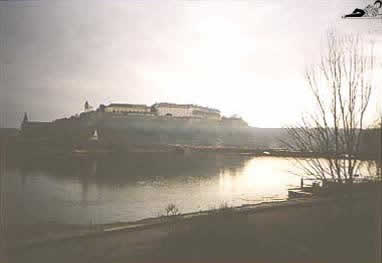 |
|
|
The fortress of Petrovaradin (a part of Novi Sad), seen from across the Danube |
The Voivodina is the northern part of what is nowadays Serbia. Two of it’s historical parts, Bacska and Banat, are situated north of the Danube. The third part, Srem, lies between Danube and Save.
The capital of the Voivodina is Novi Sad.
Bacska and Banat form the Southern part of the Great Hungarian Plain. The soil is very fertile and provided all of former Yugoslavia with wheat, sunflower oil and corn. Furthermore they grow sugar beets there, tobacco, and other grains. In the time of the blockade of Yugoslavia the main source of income of the rundown state were agricultural goods from the Voivodina that were being smuggled through and to the neighboring countries.
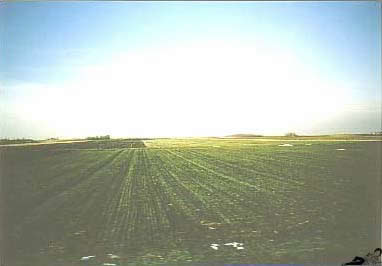 |
The typical landscape, causing a feeling of infinity |
The climate, though, is difficult to bear. The summers
are hot and merciless, the winters cold and damp. The lack of trees furthermore
aggravates the heat in summer, frequent draughts, and a lot of dust. The
water, as it is ground water, is of rather poor quality, as is the water
of the two main rivers, the Danube and the Tisa which by reaching the
Voivodina already carry a lot of pollution with them. In former times
the Voivodina was notorious for tuberculosis and allegedly it’s resurgent
due to the devastate condition of all of Serbia.
Moreover, the NATO war of 1999 has damaged the soil and water of the Voivodina.
The burning refineries of Novi Sad and Pancevo and the bombed petrochemical
factory in Pancevo have emitted a lot of poisonous substances into the
ground which now is in the crops that grow there. Many of the towns of
the Voivodina were bombed, perhaps with bombs containing uranium which
have left radiation, and this is also entering in the food chain, apart
from the fact that people breathe it or are affected in other ways.
The people of the Voivodnia who enjoyed a high living
standard and freedom of movement up till the 80-ies have now become impoverished,
the infrastructure has deteriorated, and the world has forgotten them.
As all of the inhabitans of Serbia they need visa for almost every country
and are kind of locked up in their rather fucked-up country.
Many of original inhabitants have emigrated, especially among the youth.
In exchange, Serb refugees from the Krajina, Bosnia and Kosovo have entered,
without belongings, and without the possibilities or the knowledge of
how to work the land under the special conditions of the Great Plain.
The Voivodina was populated – after the victorious wars of Austria against the Ottoman Empire at the turn from the 17th to the 18th century – with settlers of all parts of the Austro-Hungarian monarchy.
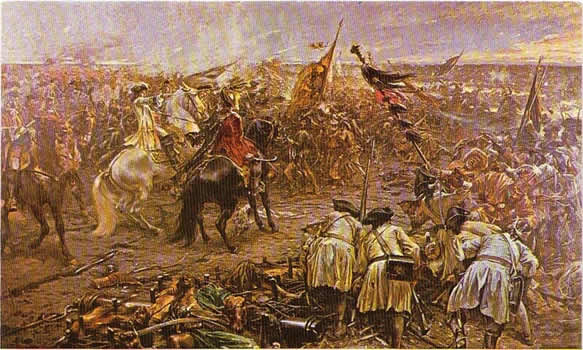 |
|
Franz Eisenhut: The battle of Senta. This battle, fought in 1697, was decisive in the rendition of the Ottoman forces and led to the peace treaty of Karlovci (Karlowitz) in 1699. Oil on canvas, 7x4 m. To be found in the town hall of Sombor. |
Today you can still find various minorities there, first
of all the Hungarians, furthermore the Bunyevac (a Croatian tribe), Rumanians,
Ucranians, Slovaks, … The Germans, Danube- and Banatian Swabians, as they were
called, about 150.000 people, were declared collaborators of the occupying
German and Hungarian forces, collected in camps and driven out of the country after World
War II, – in accordance with the Allied Forces’ politics.
The Serbs who form the majority of the Voivodina’s
population have come in many waves of settlement. The anchestors of some
of them have lived there already in the times of the Turks. Others came
with the Big Migration at the end of the 17th century. Lateron, as the
Voivodina formed part of Austro-Hungaria, Serbs from all over the Balkans
settled in this fertile region. As the Voivodina became part of the Kingdom
of the Serbs, Croats and Slovenes, as the first Yugoslav state was called,
the Serbs took over the administration and the police forces, thus causing
a new influx of settlers. After World War II came the Lichani, Serbs from
the montaineous parts of the Krajina, and the Montenegrins, taking over
the place of the deported Swabians. And now, as a result of the Yugoslav
wars of the 90-ies many refugees from the successor states of former Yugoslavia
have come to the Voivodina, finding it difficult to integrate.
The Hungarians, as most of the other nationalities, have come with the first wave of the resettlement, about 200 years ago. In the time of the Austro-Hungarian monarchy they were the dominant nationality and most present in the Voivodina’s administration. After World War I most of the civil servants were replaced by Serbs. After World War II there was a time of turmoil and persecution until the new state was fully established and they were granted extensive minority rights. Most of them are still effective, but the institutions are funded poorly as Serbia in general is broke.
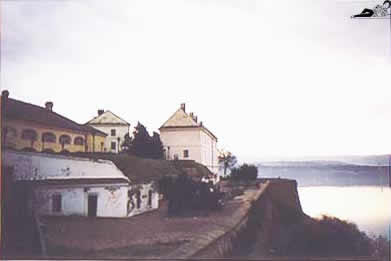 |
Part of the fortress of Petrovaradin |
| Petrovaradin, the Danube and parts of Novi sad, as seen from the fortress | 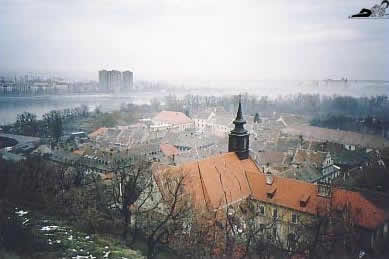 |
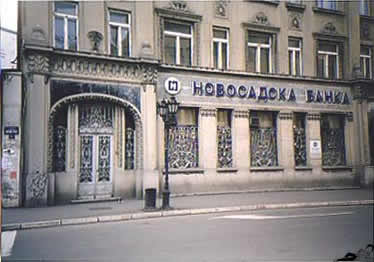 |
A building in Novi Sad |
The cultural centers of the Hungarian minority are Novi
Sad and Subotica. In Novi Sad the traditional Hungarian newspaper, the
"Hungarian Word", is edited. The Hungarian publishing house
"FORUM" is located there. The FORUM played an inportant role
in the times of the cold war as many books published in America or Europe
that were forbidden or not desired in Hungary were translated into Hungarian
in Yugoslavia and published by FORUM, and from there partially made their
way into Hungary, too. The achievements of FORUM have not been honoured,
though, as after the system change in Eastern Europe the importance of
Yugoslavia as a bridge between West and East became obsolete, and FORUM,
as many similiar institutions, was on the verge of bankruptcy.
Today the Hungarians number about 200.000, though the
exact number is not known, as many have emigrated when the wars started,
some have come back, but no census has taken place since then. Many men
fled to Hungary at the beginning of the 90-ies to evade draft service.
Younger people went away hoping to find better conditions to start a new
life than the bankrupt Yugoslav state could offer to them. Of those who
went to Hungary – the vast majority – many have come back as
they found out that they are not welcome there, either.
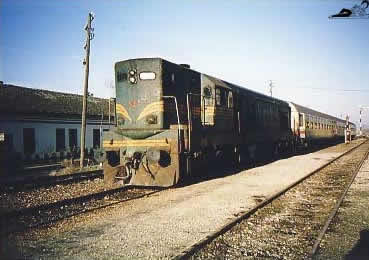 |
The ”railbus“, a very traditional means of transport in the Voivodina |
The politics of Hungary towards the Hungarian minorities
in the neighboring countries are ambiguous. On one hand the politicians
of Hungary like to use those "Hungarians outside the borders of Hungary"
as a means to mess with the internal affairs of other states. Therefore
they are always present in sermons stressing the importance of Hungary
in the whole region. On the other hand Hungary doesn’t want them
to immigrate, to live or to work in Hungary. They shall stay at home in
order to serve the purpose mentioned above, to extend the influence of
Hungary across the border.
As Yugoslavia started to desintegrate and the foreign
currency accounts in that country were being frozen, many people –
of all nationalities – brought the money they had to banks in Hungary,
using them as a safe haven. The Hungarian banks took advantage of this,
popped up their currency reserves and offered very poor conditions to
the Yugoslavs.
The Hungarian Status Law issued in 2002 has caused a lot of political uproar in the countries with Hungarian minorities as it is correctly interpreted as an attempt to interfere in domestic politics but it doesn’t really benefit the people affected by it. It didn’t improve their chances for studying, finding jobs, buying real estate in Hungary. It didn’t give them the right for a residence or work permit there. It most propably won’t excempt them from the visa obligation for Yugoslav/Serbian citizens that will step into force as soon as Hungary joins the EU. It only served as a legal title for the Hungarian government, demanding influence in the domestic politics of another souvereign state, thus causing more disadvantage than benefit for the Hungarians of the Voivodina.
Before World War I the Voivodina was a rather well-to-do region of Hungary
and therefore preserves a lot of buildings in the Hungarian seccession
style.
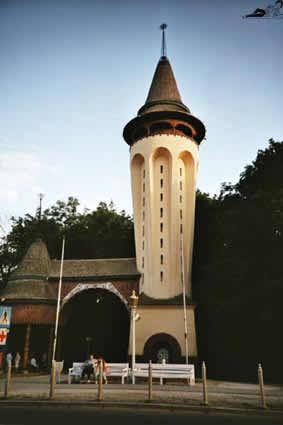 |
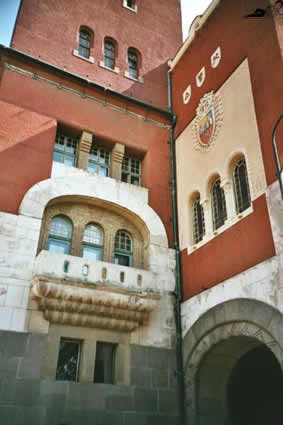 |
| The water tower in Palics | The town hall of Subotica |
 |
Miksa (Maximilian) Roth: Stained Glass window in the town hall of Subotica |
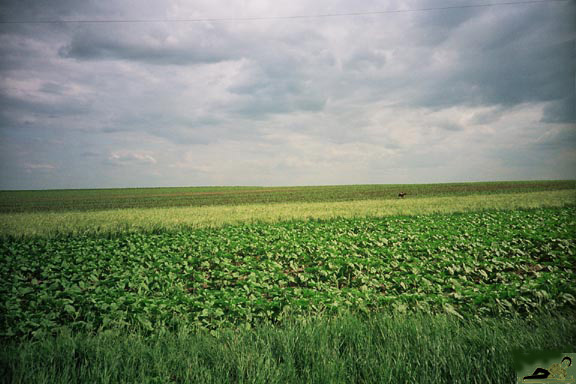 |
 |
|
| Tobacco field near Telecska |
|
The fire brigade’s house in Senta |
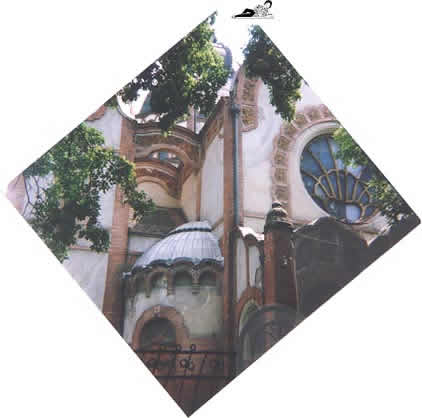 |
Left: the synagogue in Subotica (not in use)
Right: the church of Telecska
|
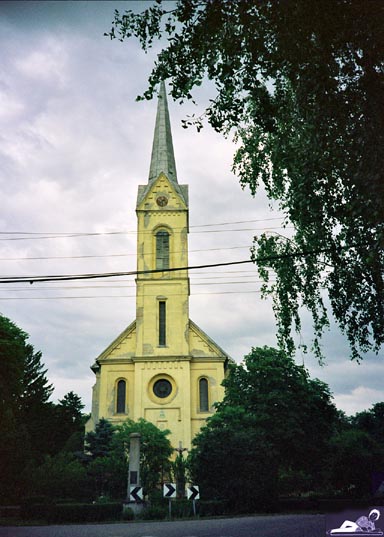 |
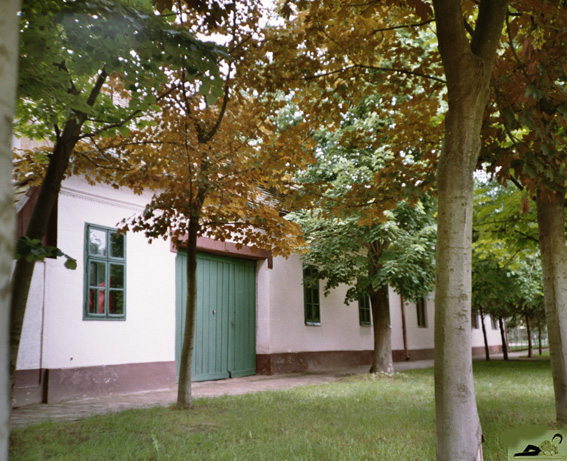 |
Right: a building in Subotica
Left: a street in Susara (in the so-called sand desert of Deli Blato) |
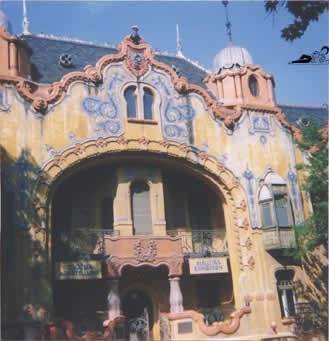 |
The traditional village houses are built from adobe, as this is the best material for isolation against the summer heat and the chilly winters. The disadvantage of this material is that it dissolves quickly when exposed to water. In case of floods entire village or parts of cities were washed away. The rainfall does it’s fair share, too, therefore the adobe houses need more frequent renovation than houses built from red brick and coated with plaster.
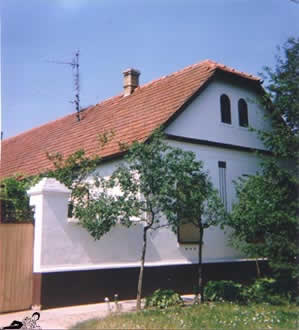 |
Left: peasant’s house in the village of Pacir
Right: a peasant’s house, to be approached through a sunflower field |
 |
| Peasant’s house in the village of Kupusina | 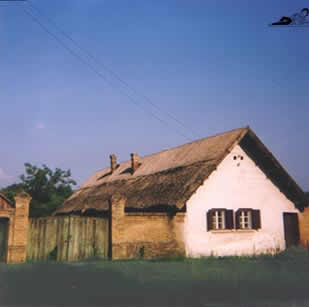 |
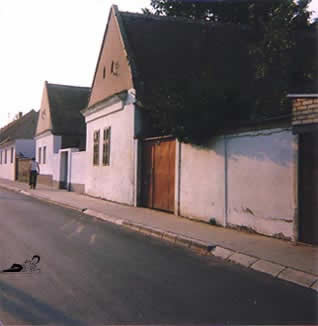 |
A street in the (originally Swabian) town of Apatin |
In the Voivodina food plays an important role in everday life and popular culture. Well-fed people are considered healthy, and beautiful. The food one is being served is extensive, both in amount and in variety, as many national specialties have found their way to this area, together with the settlers. Expecting guests is an excellent excuse to cook with even more ambition and pots than usual: Nobody wants the guest to tell afterwards he hasn’t eaten good in this house! And, even worse: To say he got starved, he didn’t get enough! The ordinary family meals plus one or more guests are a small affair, though, compared to real festivities, as weddings or birthdays.
The inhabitants of the Voivodina resort to eating in every state of mind: They eat to celebrate, they stuff themselves out of boredom, or in desperation. Of course one should not forget that – at least in happier times – there are also big amounts of plum brandy – slivovice –, to help getting down and process all this food. And to the delight of my humble self – the Apatinsko beer to supply the happy eater with some liquid.
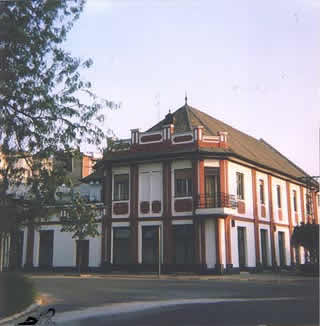 |
The beer brewery in Apatin |
|
A rather typical house in Sombor (typical both in design, and, unfortunately nowadays also as far as the actual state is concerned) |
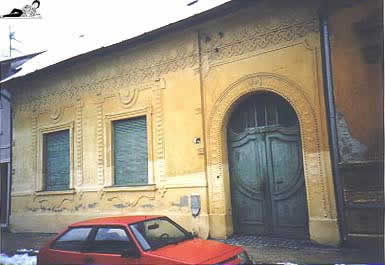 |
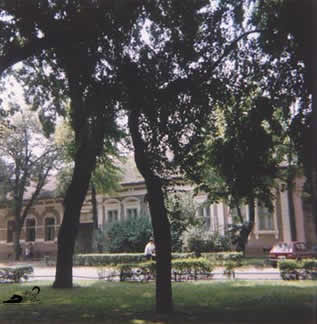 |
A street in Sombor, the "green town". Sombor allegedly is the town with the highest amount of trees in relation to it’s extension in the whole world. This as a result of a 19th-century mayor’s efforts who found that the general treelessness of the Voivodina has to be counterbalanced somehow, at least in "his" town. |